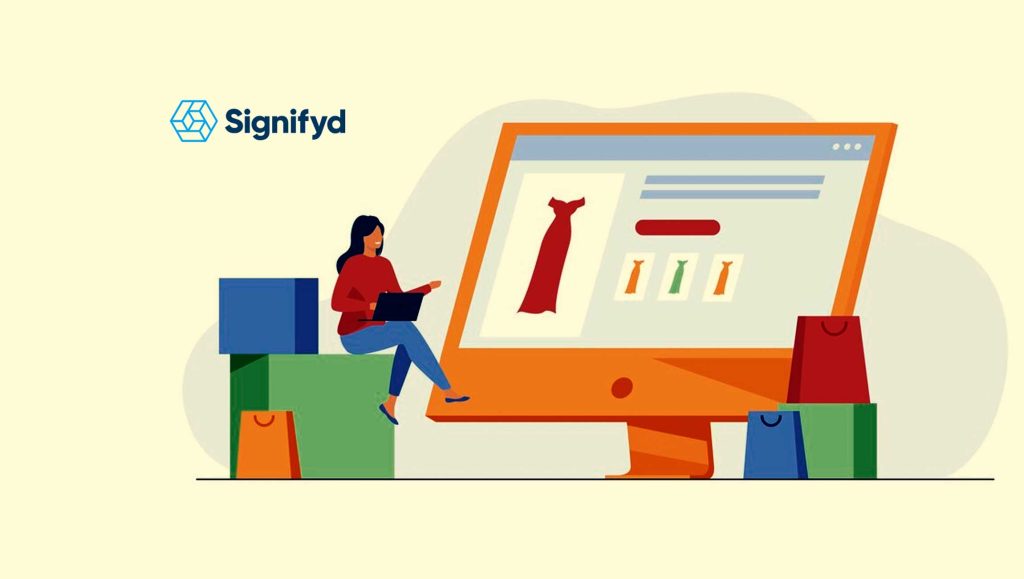Consumers continue to trade down for cheaper goods, but they are poised to push online holiday spending up by 7% over last year
Online shoppers will continue to defy the vibecession in the coming holiday season by spending more than last year during the crucial Cyber Five period and during the fourth quarter overall, according to the Holiday Ecommerce Pulse projection released by commerce protection provider Signifyd.
Consumers continue to trade down for cheaper goods, but they are poised to push online holiday spending up by 7% over last year, according to Signifyd’s Holiday Ecommerce Pulse projection.
Ecommerce spending will be up 8% compared to last year during 2024’s Cyber Five — the five days of shopping fervor starting with Thanksgiving. The prediction is based on an analysis derived from historical holiday spending and recent trends. For the full quarter, sales will increase 7% over spending in October through December last year.
Key findings from the latest Ecommerce Pulse analytics
- Online holiday shoppers will push spending in October through December up by 7% over the same period in 2023. Cyber Five ecommerce sales will increase by 8%.
- The back-to-school season finished strong with online sales up 11% over August 2023.
- Consumers continue to search for value, trading down from preferred products to substitute items at a lower price. Online order values dropped 3% in August compared to a year ago.
The holiday projection is good news for online retailers, but it comes along with August Ecommerce Pulse data from Signifyd that shows consumers continue to trade down by looking for bargains and choosing to bypass top-of-the-line items for more practical alternatives.
“You could say we had a strong month in terms of demand,” said Signifyd Senior Data Analyst Phelim Killough, who conducted Signifyd’s latest shopping research. “Demand was high, but when consumers got to the checkout, they showed restraint.”
Read More: DataFeedWatch by Cart.com Becomes the First Feed Management Solution to Introduce Native AI
Signs of the vibecession — a catchy phrase alluding to consumers’ dour mood despite an improving economy — permeate Signifyd’s monthly Ecommerce Pulse report. While overall ecommerce spending for the month was 11% higher than last August and the number of orders placed increased by 15%, the value of each order dropped by 3%.
That is a sign that consumers are still spending — but cautiously, being selective about what they are dropping in their digital carts.
“We’ve seen the same trend for many months now,” Killough said. “It’s a sign that retailers should be ready to appeal to shoppers with discounts during the upcoming holiday season, or to otherwise find ways to distinguish their offerings from what competitors are offering, potentially at a lower price.”
Killough’s holiday analysis predicts the fashion and apparel category, the electronics category and the grocery category will all have a fourth quarter to celebrate. Spending in the luxury category and in the outdoor and leisure category will have solid quarters, with alcohol sales and home goods sales falling below their performance during the 2023 holiday season.
|
Projected holiday season spending by vertical – 2024 vs. 2023 |
|
Grocery |
+20% |
|
Fashion and apparel |
+12% |
|
Electronics |
+8% |
|
Leisure and outdoor |
+4% |
|
Luxury goods |
+4% |
|
Beauty and cosmetics |
0% |
|
Auto parts |
-3% |
|
Home goods |
-3% |
|
Alcohol |
-4% |
The projection shows spending building to a crescendo in December in significant part because of a quirk in the calendar that splits the Cyber Five shopping spree between November and December.
October will see a 5% boost in ecommerce spending over a year ago. November’s online sales will fall 2% below last year and December will see an 18% increase over 2023, in part because 40% of Cyber Five spending, including Cyber Monday, will take place in December. The dramatic increase caused by the shift of two of the five key shopping days from November to December underscores the outsized importance to online retailers of the long Thanksgiving weekend.
Read More: SalesTechStar Interview with Clay Sharman, Founder and CEO of Krateo AI
The holiday projections were released as part of Signifyd’s monthly Ecommerce Pulse report for August, the tail end of the back-to-school shopping season. Sales in traditional back-to-school categories were again mixed in August, as they were in July.
|
August ecommerce sales 2024 vs. 2023 |
|
Grocery |
+34% |
|
Fashion and apparel |
+18% |
|
General merchandise |
+9% |
|
Leisure and outdoor |
+8% |
|
Home goods |
+7% |
|
Luxury goods |
+7% |
|
Electronics |
-1% |
|
Beauty and cosmetics |
-4% |
|
Auto parts |
-5% |
|
All categories |
+11% |
Home goods staged a comeback, up 7% over a year ago, perhaps reflecting the late-season need to decorate dorm rooms and college apartments. Apparel remained strong as it was in July, increasing by 18% over a year ago, and electronics remained virtually flat, declining 1% from last year.
In other categories, grocery continued its strong showing in August up 34%, possibly reflecting grocers’ ongoing improvement in appealing to online shoppers. General merchandise, leisure and outdoor, and luxury goods were clustered around home goods, all rising over a year ago between 7% and 9%.
Both the beauty and cosmetics and the auto parts categories were losers in August, falling 4% and 5% from their August 2023 sales.





















